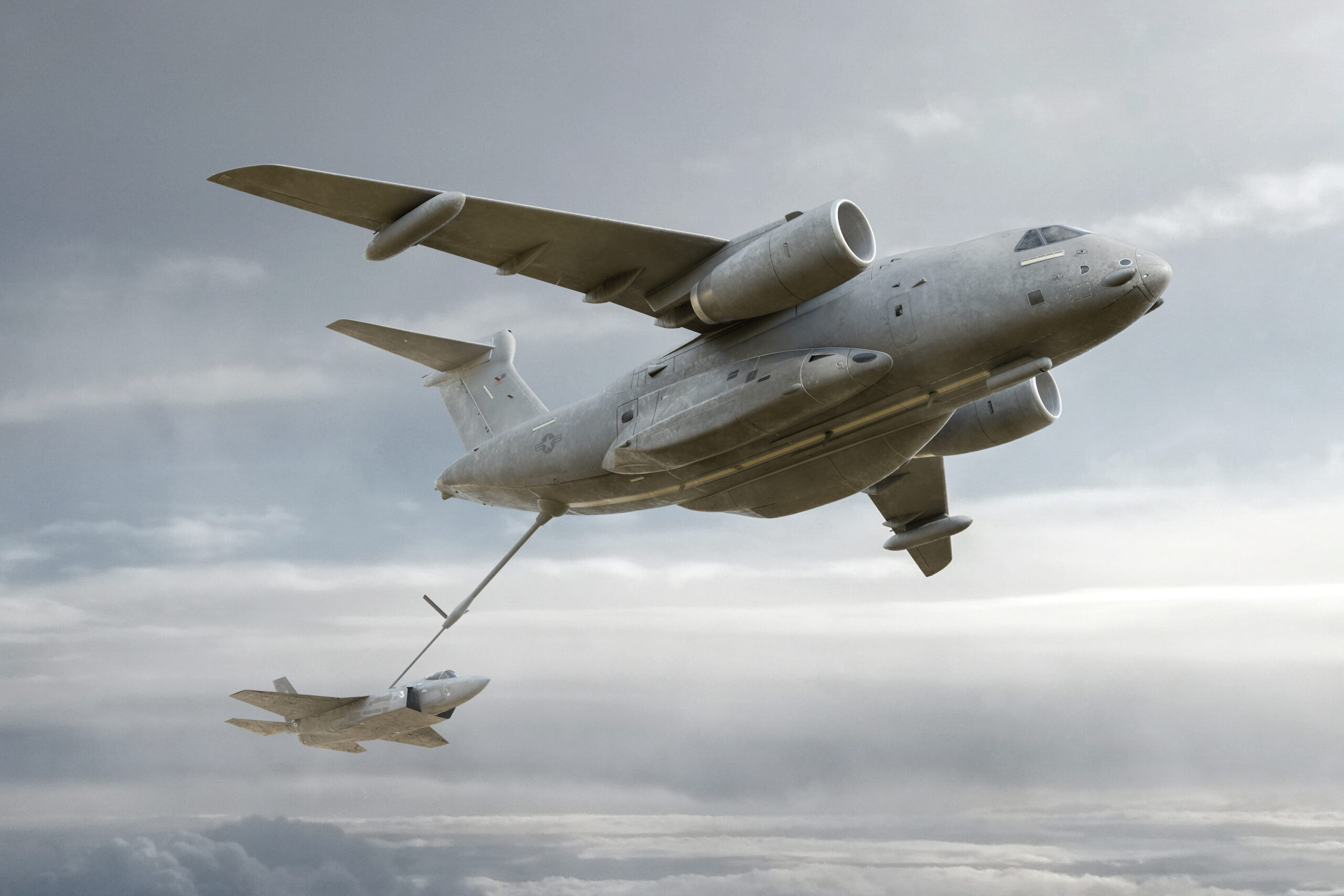
L3Harris has partnered with Embraer on a US version of KC-390 tanker that will add a refueling boom to the aircraft. (L3Harris)
WASHINGTON — L3Harris and Brazilian aerospace firm Embraer are teaming up in the hopes of breaking the latter’s KC-390 tanker into the US military market, an L3Harris executive told Breaking Defense in an exclusive interview.
Going forward, L3Harris will be the prime contractor for the KC-390 in the United States and plans to develop US-specific mission systems for the tanker, including a brand-new boom purpose-built for US aircraft, said Luke Savoie, president of L3Harris’s ISR sector.
“Sometimes innovation is about finding the low risk things that meet future demands,” he said. “And in this particular instance, we really saw a significant question mark around, ‘Hey, how do we, you know, move our fighter forces around, and then how do we reduce choke points … and how do we become unpredictable for an adversary?’ … Finding a partner like Embraer, the answer created itself.”
The announcement of a partnership between L3Harris and Embraer comes just months before the Air Force is slated to decide whether to press forward with a competition for a “bridge tanker,” also known as KC-Y, that will fill a gap between production of Boeing’s KC-46 and a next-generation family of tankers known as KC-Z.
L3Harris envisions the KC-390 as “complementary” to the large tankers that the Air Force is seeking as part of the bridge tanker program, and the company does not expect to offer KC-390 as a potential KC-Y contender. Where it does see opportunity is the KC-Z family of systems, as the service considers starting an analysis of alternatives for that program as early as 2024.
“We see strategic [tankers] as a cornerstone, or as one of those pillars of a [KC-Z] family of systems. … But we also see the tactical systems [like the KC-390], which have a different offload requirement [and] the ability to be austere or be in alignment with where their supported assets can be,” Savoie said. “We’re really focused on that. We believe that tactical component to that family of systems is the logical first component.”
Chinese Consideration
As the US Air Force eyes China as its most powerful potential adversary, the service is exploring a concept it calls “agile combat employment,” which calls for distributing its aircraft and other infrastructures in smaller, disaggregated groups, thus making it more difficult for China to wipe out a large portion of US air forces if it were to attack a major base in the Asia-Pacific.
As L3Harris assessed what the Air Force might need in terms of conducting logistics in an austere, contested environment, fuel emerged as the most critical commodity necessary for keeping air operations going, Savoie said. However, even smallest tanker in the Air Force’s current inventory, the KC-135, is a relatively large aircraft, which may make it difficult for supporting distributed operations at a more tactical level.
“That really led us to a very logical conclusion, which was a partnership with Embraer,” said Savoie. The KC-390 is “the first clean-sheet designed tanker since the 1950s. It’s purpose-built [to be a tanker], not a commercial-derivative [airplane] made into something else. … And it was also an austere platform, a platform that can land in the dirt, a platform that can land in various types of runways, [capable of] short-field [takeoffs and landings], very easy to service.”
Embraer is currently producing a total of 22 KC-390s for the Brazilian air force, with Portugal, the Netherlands and Hungary also signed on to buy the aircraft. For the US-version, L3Harris will design and integrate both the refueling boom and other US-specific mission systems, as well as create a “digital twin” of those mission systems using digital engineering, Savoie said.
While L3Harris and Embraer have not finalized how much of the KC-390 will be made in America, Savoie said that “at a minimum” the company will conduct the final assembly in the United States, with the US-specific mission systems added at L3Harris’s facilities in Waco, Texas.
Savoie declined to detail how much L3Harris and Embraer are investing to develop the US-specific version of the KC-390, as well as what testing milestones are planned. He also would not comment on how the boom operator station will be configured, including whether boom operators would use cameras and sensors to visualize the refueling process or whether any portion of the mission could be automated.
“We have multiple options of what we plan to do [with the boom] both remote and local in the platform … with multiple options for how the boom operator interacts with the boom and interacts with the refueler,” he said.
The partnership between L3Harris and Embraer is the death knell of a series of Boeing-Embraer partnership agreements to market the KC-390 globally. The companies in December 2018 announced a joint venture to “promote and develop new markets” for the KC-390. However, after Boeing terminated a $4.2 billion deal for a majority stake in Embraer’s commercial aviation business in 2020, it became unclear whether the two aerospace companies would remain partnered on KC-390.
Jackson Schneider, CEO of Embraer Defense and Security, told reporters in June that the company was closing in on an agreement for a new industry partner for the KC-390, reported Aviacionline, a Spanish-language aerospace trade publication.






















